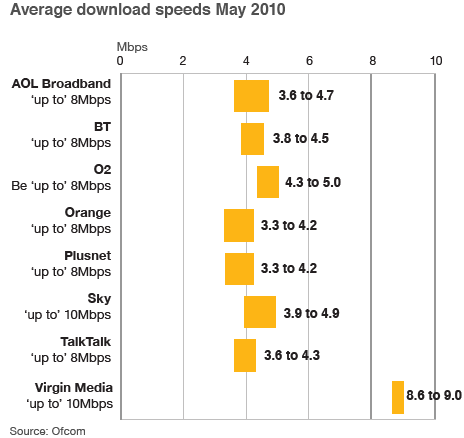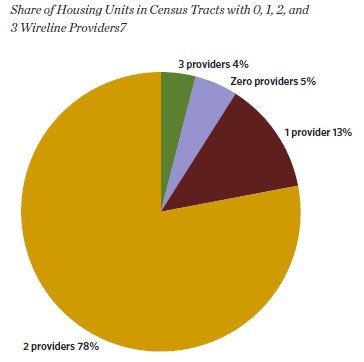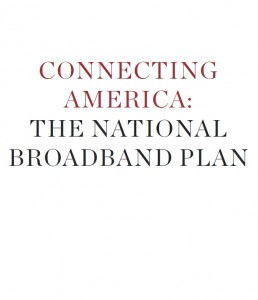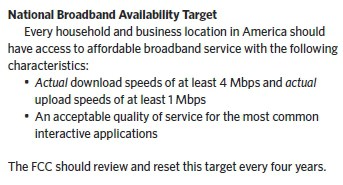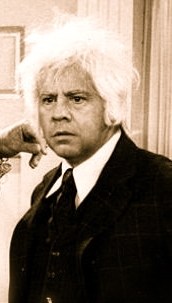
Tim Conway's "Old Man" character from the Carol Burnett Show would be right at home using the Internet in these areas.
Nick Saint at the Business Insider has been sifting through some of the raw data released last week by the Federal Communications Commission regarding broadband service in the United States. He’s managed to identify the 10 worst counties in America for broadband service based on statistics from 2008. But two of those probably should have never been on the list. More on that later.
Harrison County, Mississippi — A single pond in Harrison County is the only known habitat of the critically endangered dusky gopher frog. It doesn’t have broadband, and neither do most of the residents of this beleaguered part of southern Mississippi. The cities of Gulfport and Biloxi are in Harrison County, an area torn up by hurricanes from Camille to Katrina. Now, the beaches are coated in BP oil. Harrison County can’t get a break. Cable One and AT&T are the primary providers. Cable One’s dreadful service only reaches well-populated areas and AT&T has taken its sweet time expanding DSL service in the area.
Imperial County, California — The nation’s lettuce basket, Imperial County communities live on a very low fiber-optic diet. While the soil is rich for crops, the people who plant and harvest them are not. El Centro, the biggest city, has some broadband available, but with the city having the nation’s highest unemployment rate (27.3 percent), many can’t afford it. Once in farm country, cable doesn’t offer service and DSL is hard to come by.
Corson County, South Dakota — Representative of the pervasive problem of broadband unavailability on Native American lands, a large part of Corson County includes the Standing Rock Indian Reservation. Saint notes the FCC found just 12.5 percent of Native Americans subscribe to broadband service, compared to 56 percent of the rest of us.
Ector County, Texas — Odessa’s hometown America-charm was put on display for all to see on NBC’s Friday Night Lights, which celebrated small town high school football. The reality is less exciting. Like Harrison County, Ector residents are stuck with Cable One, which loves Internet Overcharging schemes and spied on its Alabama broadband customers. Good ole AT&T grudgingly provided DSL, if you could get it, until mid-2009 when U-verse finally started to show up. Now large parts of the county outside of Odessa can’t get that either.
San Juan, Puerto Rico — Usually considered an afterthought by American telecommunications companies, Puerto Rico has long suffered with low quality service. Caribbean Net News: “Puerto Rico’s broadband penetration rate is unacceptable, with less than 40% of households subscribing to broadband services”, said Carlo Marazzi, President of Critical Hub Networks. “While there are many factors at play, broadband in Puerto Rico is simply too expensive and too slow, when compared to the rest of the nation. Broadband Internet service in Puerto Rico is 60% more expensive and 78% slower than the United States national median. In a report published this year by the Communication Workers of America (CWA) which ranked broadband speeds in the 50 states, Puerto Rico and the District of Columbia, Puerto Rico was ranked in last place (52nd place).
Jasper County, Missouri — Saint noted 18 percent of Jasper County lives below the poverty line, which is not exactly attractive to broadband investment. Jasper County’s broadband needs are barely met by a cable provider, AT&T, and for some, an electric utility operating a Wireless ISP, providing service where cable and DSL don’t go. For Jasper County residents, the challenge can be cost as much as access.
Appomattox County, Virginia — Every student known Appomattox was the last stand of Confederate leader Robert E. Lee during the Civil War. Today, residents there are worked to their last nerve because they can’t easily obtain high speed Internet. There is no DSL service from the phone company and only limited cable service. But at least the county is trying. Let’s let John Spencer, assistant county administrator, tell you in his own words what Appomattox County is doing to deliver broadband for its 14,000 residents:
Bristol Bay Borough, Alaska — The epitome of rural America, large swaths of Alaska are dependent on subsidies paid from the Universal Service Fund for basic telephone service. Outside of large cities, cable television is a theory. Telephone company DSL service and wireless are the predominate broadband technologies in rural, expansive Alaska. For many areas, both are awful. Bristol Bay Borough is known as the “Red Salmon Capital of the World,” if only because there are far more salmon than there are fishermen to catch them. Internet access for many of the area’s 953 residents means a trip to the Martin Monsen Library, which offers free Wi-Fi for limited access. If you want Internet at home, it will cost you plenty:
| Wireless Internet Access – Bristol Bay Internet/GCI |
||
$26/month |
$51/month
|
$101/month
|
That is the most expensive and slow “broadband” we’ve ever encountered, and with a usage limit of just 3GB per month, it’s for web browsing and e-mail only.
Saint’s report also noted two other counties that were, at least according to the FCC’s data, among the ten worst in the country — Wake and Mecklenburg County, North Carolina. That includes the cities of Charlotte and Raleigh, which clearly have had access to at least 4Mbps service for several years now. Even Saint is skeptical, suspecting incomplete data is perhaps responsible for the two North Carolina counties ending up on the list.


 Subscribe
Subscribe

